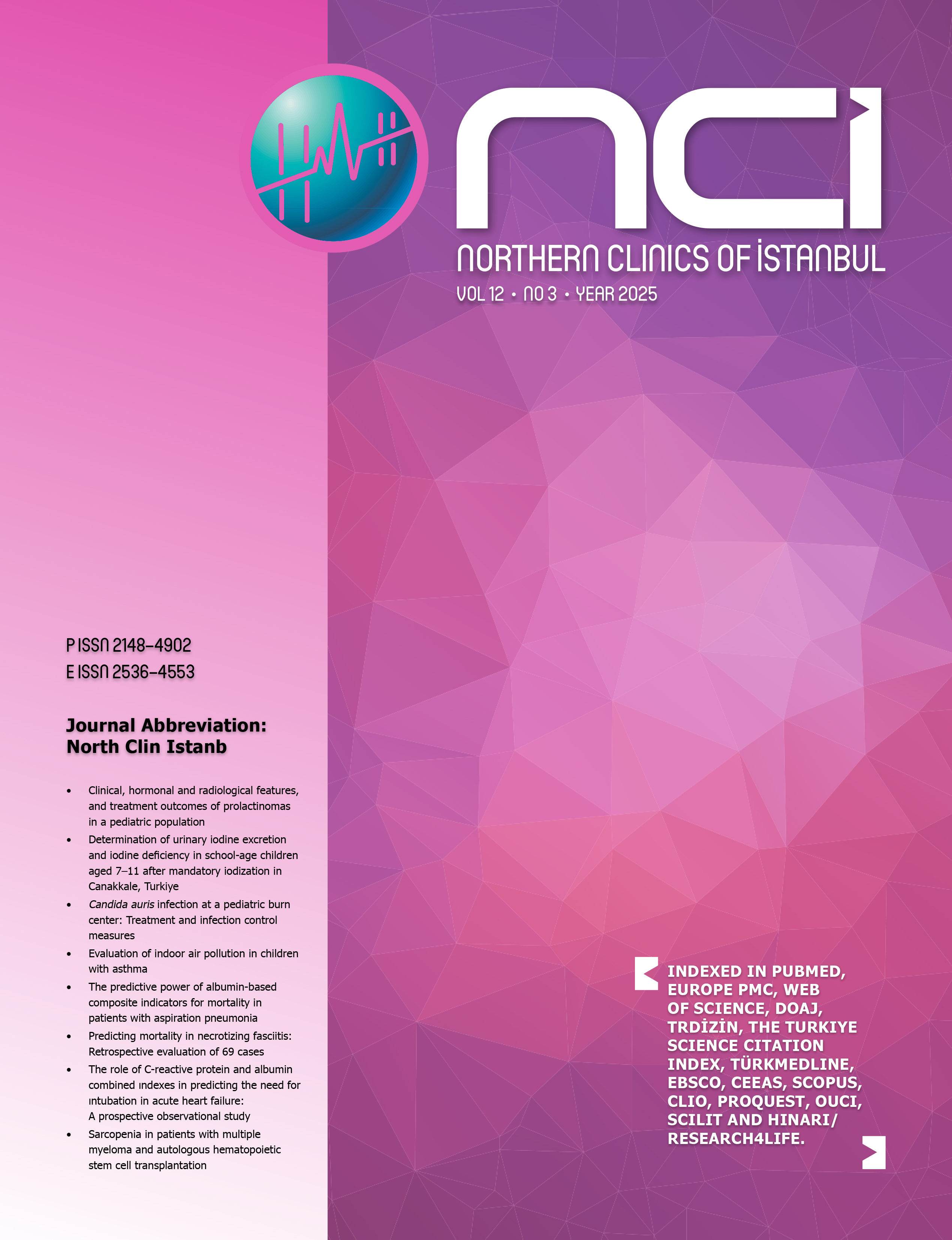The importance of quantitative evaluation of constipation in children with lower urinary tract dysfunction
Tarik Emre Sener1, Dogancan Dorucu1, Sebahat Cam21Department of Urology, Marmara University Faculty of Medicine, Istanbul, Turkiye2Division of Pediatric Gastroenterology, Department of Pediatrics, Istanbul Medeniyet University Faculty of Medicine, Istanbul, Turkiye
OBJECTIVE: There is a known association between lower urinary tract dysfunction (LUTD) and constipation. The objective of this study was to investigate any correlation between voiding and bowel symptoms in children with LUTD.
METHODS: Children presenting with LUTD to our pediatric urology unit were prospectively included. Demographic data were recorded. All patients filled out the Pediatric Lower Urinary Tract Symptom Score (P-LUTSS) and Constipation and Fecal Incontinence Symptom Severity (CFISS) questionnaires. Symptom score correlation and associations with clinical findings were evaluated.
RESULTS: 76 patients were included. The mean P-LUTSS was 11±7.1; mean CFISS was 7.7±7.5. According to P-LUTSS risk groups, median CFISS score increased as the risk group was increased. There was direct correlation between P-LUTSS and CFISS for all patients. 6th, 7th, 8th, 9th, 10th and 13th questions of P-LUTSS were correlated with CFISS; the 1st and 7th questions of CFISS were correlated with P-LUTSS. Patients who responded not to have constipation on P-LUTSS had lower CFISS scores compared to those who had constipation. Patients who had a 0 score on CFISS had a mean P-LUTSS of 7.7±6.2, which put the majority of patients in low-risk group. Also, out of these 11 patients, 10 of them responded to have no constipation on P-LUTSS.
CONCLUSION: A relationship between LUTD and bowel symptoms, as well as the positive correlation between P-LUTSS and CFISS was demonstrated in this study. Patients presenting with LUTD should undergo meticulous evaluation using special questionnaires for bowel symptoms. Only by then, a complete treatment approach can be provided.
Alt üriner sistem disfonksiyonu olan çocuklarda kabizliğin kantitatif değerlendirilmesinin önemi
Tarik Emre Sener1, Dogancan Dorucu1, Sebahat Cam21Marmara Üniversitesi Tıp Fakültesi, Üroloji Anabilim Dalı, İstanbul2İstanbul Medeniyet Üniversitesi Tıp Fakültesi, Çocuk Sağlığı ve Hastalıkları Anabilim Dalı, Pediatrik Gastroenteroloji Bilim Dalı, İstanbul
Giriş: Alt Üriner sistem disfonksiyonu (AÜSD) ve kabızlık arasında ilişki olduğu bilinmektedir. Bu çalışmada AÜSD olan çocuklarda işeme ve bağırsak semptomları arasındaki bağlantıyı araştırmayı amaçladık.
Metot: Alt üriner sistem disfonksiyonu olan çocuklar çalışmaya alınarak prospektif olarak değerlendirildi. Hastalar tarafından Pediatric Lower Urinary Tract Symptom Score (P-LUTSS) ve Constipation and Fecal Incontinence Symptom Severity (CFISS) formları doldurdu ve semptom skorları arasındaki ilişki klinik bulgularla birlikte değerlendirildi.
Bulgular: Çalışmaya 76 hasta dahil edildi. Ortalama P-LUTSS 11±7.1; CFISS ise 7.7±7.5 olarak ölçüldü. P-LUTSS risk grupları göz önüne alınarak değerlendirildiğinde ortanca CFISS skoru arttıkça risk grubunun arttığı görüldü. Tüm hastalarda P-LUTSS ve CFISS arasında direkt korelasyon olduğu görüldü. P-LUTSS skorunun 6,7,8,9,10 ve 13. sorularının CFISS ile, CFISS skorunun 1 ve 7. sorularının P-LUTSS ile korele olduğu izlendi. P-LUTSS sorgulamasında kabızlık şikayeti olmayan hastaların CFISS skorunun daha düşük olduğu görüldü. CFISS skoru 0 olan hastaların ortalama P-LUTSS skorunun 7.7±6.2 olduğu ve bu hastaların düşük risk grubunda olduğu izlendi.
Sonuç: Alt üriner sistem disfonksiyonu ile bağırsak semptomları arasındaki ilişki ve P-LUTSS ile CFISS arasındaki pozitif korelasyon gösterilmiştir. Alt üriner sistem disfonksiyonu olan hastaların semptom skorları aracılığıyla titizlikle değerlendirilmesi gerekmektedir. (NCI-2023-8-4)
Manuscript Language: English





















